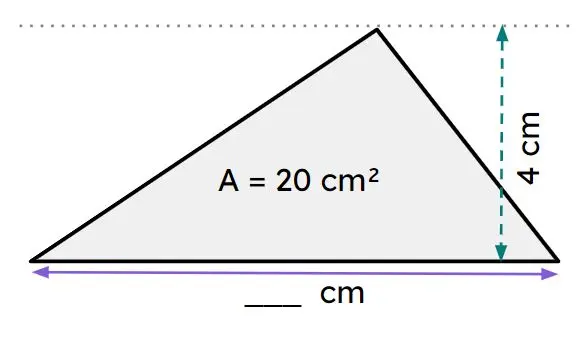Myths about teaching can hold you back
- Year 6
Use the area of a triangle to calculate unknown measurements
I can calculate unknown dimensions of a triangle with a specified area.
- Year 6
Use the area of a triangle to calculate unknown measurements
I can calculate unknown dimensions of a triangle with a specified area.
These resources were made for remote use during the pandemic, not classroom teaching.
Switch to our new teaching resources now - designed by teachers and leading subject experts, and tested in classrooms.
Lesson details
Key learning points
- The area of a triangle is half the area of a parallelogram with the same perpendicular base and height.
- The area of a triangle can be calculated using the formula area = base × perpendicular height ÷ 2
- A missing perpendicular height in a triangle can be found using the formula area × 2 ÷ base
- A missing base in a triangle can be found using the formula area × 2 ÷ perpendicular height
Keywords
Base - The base is the side which is perpendicular to the shape’s height.
Perpendicular - Two lines are perpendicular if they meet at a right angle.
Common misconception
When drawing triangles with a given area pupils may create a factor pair of the triangle's area when drawing the base and perpendicular height. The factor pair refers to the surrounding parallelogram.
For pupils who are making this mistake, encourage them to sketch the parallelogram around the triangle, reminding them to double the triangle area before finding the factor pairs.
To help you plan your year 6 maths lesson on: Use the area of a triangle to calculate unknown measurements, download all teaching resources for free and adapt to suit your pupils' needs...
To help you plan your year 6 maths lesson on: Use the area of a triangle to calculate unknown measurements, download all teaching resources for free and adapt to suit your pupils' needs.
The starter quiz will activate and check your pupils' prior knowledge, with versions available both with and without answers in PDF format.
We use learning cycles to break down learning into key concepts or ideas linked to the learning outcome. Each learning cycle features explanations with checks for understanding and practice tasks with feedback. All of this is found in our slide decks, ready for you to download and edit. The practice tasks are also available as printable worksheets and some lessons have additional materials with extra material you might need for teaching the lesson.
The assessment exit quiz will test your pupils' understanding of the key learning points.
Our video is a tool for planning, showing how other teachers might teach the lesson, offering helpful tips, modelled explanations and inspiration for your own delivery in the classroom. Plus, you can set it as homework or revision for pupils and keep their learning on track by sharing an online pupil version of this lesson.
Explore more key stage 2 maths lessons from the Area, perimeter, position and direction unit, dive into the full primary maths curriculum, or learn more about lesson planning.

Licence
Prior knowledge starter quiz
6 Questions
Q1.Which of the dotted lines shows the perpendicular height of the triangle from the labelled base?
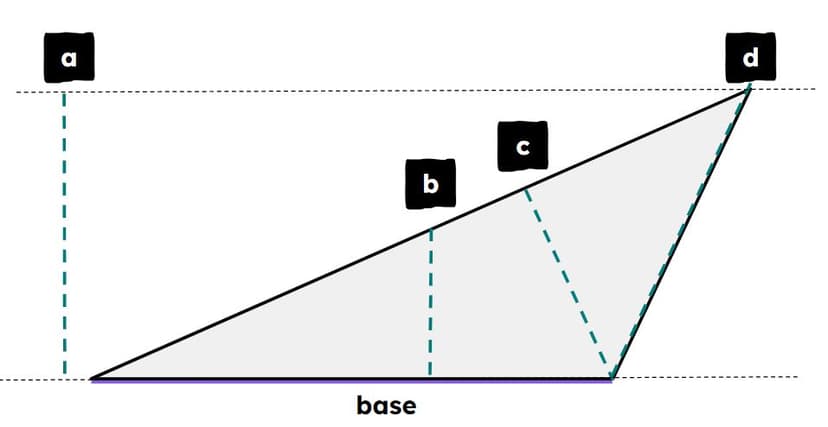
Q2.Complete the formula for the area of a triangle. Area = base × perpendicular height ÷
Q3.Calculate the area of the triangle. cm².
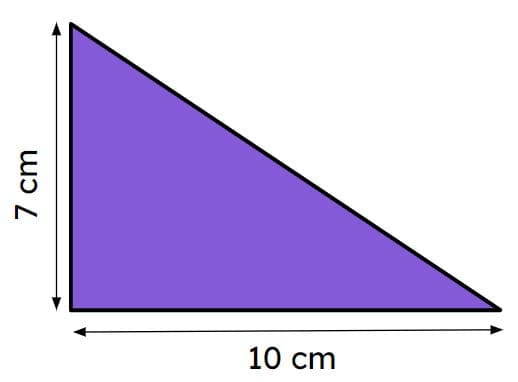
Q4.Calculate the area of the triangle. cm².
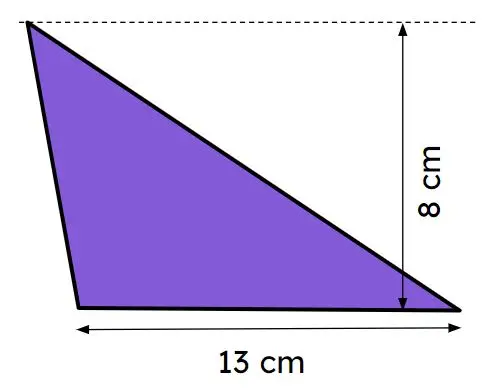
Q5.Calculate the area of a triangle with a base of 15 cm and a perpendicular height of 8 cm. cm².
Q6.If a parallelogram has an area of 56 cm² and a base of 8 cm, what is the missing perpendicular height? cm.
Assessment exit quiz
6 Questions
Q1.Complete the formula you could use if the area and perpendicular height of a triangle are known but the base is not: base = area × ÷ perpendicular height.
Q2.Complete the formula you could use if the area and base of a triangle are known but the perpendicular height is not: perpendicular height = area × 2 ÷
Q3.Look at the triangle. The missing perpendicular height is cm
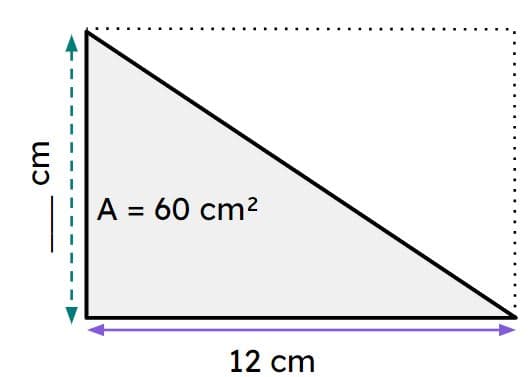
Q4.Look at the triangle. The missing perpendicular height is cm.
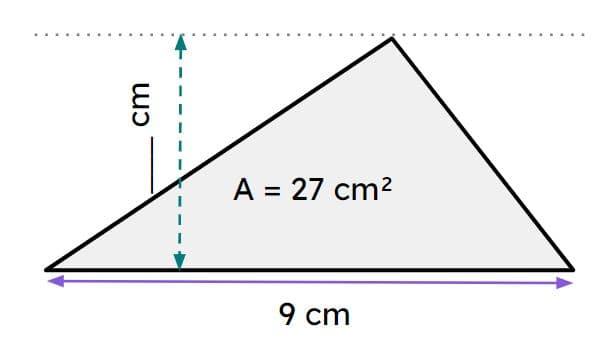
Q5.Look at the triangle. The missing base length is cm.
